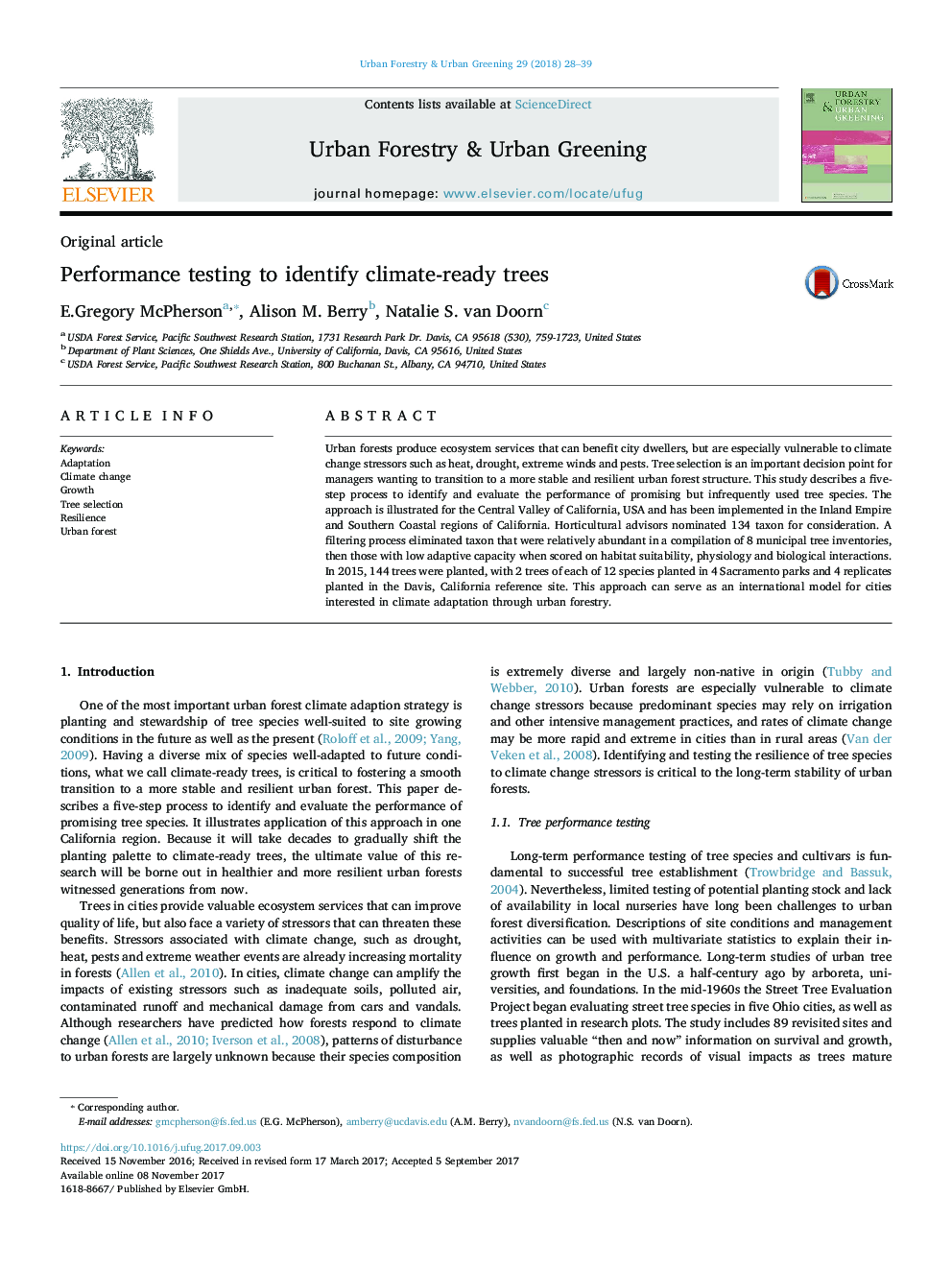| Article ID | Journal | Published Year | Pages | File Type |
|---|---|---|---|---|
| 6549377 | Urban Forestry & Urban Greening | 2018 | 12 Pages |
Abstract
Urban forests produce ecosystem services that can benefit city dwellers, but are especially vulnerable to climate change stressors such as heat, drought, extreme winds and pests. Tree selection is an important decision point for managers wanting to transition to a more stable and resilient urban forest structure. This study describes a five-step process to identify and evaluate the performance of promising but infrequently used tree species. The approach is illustrated for the Central Valley of California, USA and has been implemented in the Inland Empire and Southern Coastal regions of California. Horticultural advisors nominated 134 taxon for consideration. A filtering process eliminated taxon that were relatively abundant in a compilation of 8 municipal tree inventories, then those with low adaptive capacity when scored on habitat suitability, physiology and biological interactions. In 2015, 144 trees were planted, with 2 trees of each of 12 species planted in 4 Sacramento parks and 4 replicates planted in the Davis, California reference site. This approach can serve as an international model for cities interested in climate adaptation through urban forestry.
Related Topics
Life Sciences
Agricultural and Biological Sciences
Forestry
Authors
E.Gregory McPherson, Alison M. Berry, Natalie S. van Doorn,
